Change Your Smile in 2019

Millions are ready to make changes in their life with the start of a new year. If you haven’t already, consider adding resolutions to transform your smile in 2019. This is quite easy to do if you have the right tips to get started. Whether you want a whiter smile, straighter smile or you want to change your oral health issues, you can achieve it.
Resolutions 2019
Making New Year’s resolutions is something that countless millions will do in the month of December. For many, the start of a new year is a time for reevaluating health and life goals, and a time when many recommit to goals they didn’t quite reach. Some of the top resolutions include:
- Eating healthier
- Exercising more
- Smiling more
- Saving money
- Making better health choices
- Sleeping enough
- Being social
Did you notice that oral health isn’t anywhere on the top resolutions that people make? Oral health is often overlooked because it seems like something so small compared to your overall health. However, your oral health is directly related to how healthy you are. Improvements to your smile and mouth health can improve your health and wellness.
Many chronic conditions become worse if your oral hygiene is lacking. Some include diabetes, heart disease, autoimmune disorders, and anything that has to due with your nutrition. With chronic oral health problems such as extensive tooth loss, your overall health will decline rapidly. You may not be able to eat, and chewing, biting, smiling and other basic functions will become difficult. However, most oral health issues are avoidable by simple habits done daily. You have heard of most of these habits already, as they are the basics you hear from the dentist every time you go in for a visit. However, most people can improve their technique with oral hygiene even if they are already doing the basics.

Small Changes, Big Results
Our patients either have braces on their teeth or they are looking to get them. Great oral health is needed if you want to get braces on your teeth. We make sure that our patients are free of cavities and gum issues before orthodontic treatment happens. That means, a dental visit is needed to check for any dental issues beforehand. When dental issues are there, they are fixed and great oral hygiene must be followed thereafter. That includes:
- Brushing. Brush your teeth at least twice a day with fluoride toothpaste. With braces, brush after every meal. Use a proxabrush tool or a Waterpik to dislodge stuck food. Brush in all different directions, especially with the brackets. Replace your toothbrush every 3 months or when the bristles become frayed.
- Flossing. This step is skipped often, but is so important to your smile! Flossing gets 40% of your tooth surfaces. If you want a better smile with braces, you gotta floss or that smile will be damaged. Whether you have braces or are getting them, make the decision to floss 1-2 times every day, using floss threaders or threadable floss.
- Nutrition: Skip the sugary foods as much as possible. This leads to plaque production and tooth decay. Avoid carbonated drinks or ones with citrus that leads to tooth erosion.
Continuous Oral Problems
If you brush, floss, visit the dentist and use oral health aids like mouthwash and fluoride, you may wonder why you still get cavities and gum problems. Studies show that your smile and oral health can be determined by genetics in some cases. Some genes that run in families or specific cultures can make you more susceptible to oral health diseases. For example, those of African descent have specific genes that make them more susceptible to gum disease.
If you have specific conditions that run in your family such as heart disease or diabetes, oral health problems will likely follow suit. This is not inevitable, but something you must be aware of. If you have any sort of chronic condition, make sure you are doing all that you can to have good oral hygiene habits throughout your day. If you continue to have frequent oral problems or issues with your smile, we can go over proper oral hygiene methods during one of your orthodontic appointments. Great oral hygiene and following proper techniques is very important to keeping your teeth healthy and strong, especially with braces. Sometimes, all it takes is changing up your technique or what you are eating to have better oral health and a better smile.
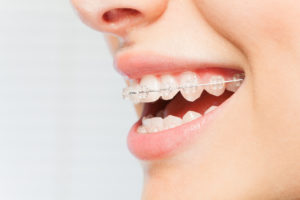
Cosmetic Changes to Your Smile
If you want to completely transform your smile in 2019, don’t wait to get orthodontic treatment. Studies show that getting braces is a great way to not only help you reduce your oral health problems, but an excellent way to get a better smile. Orthodontic treatment generally takes 18 months or less from start to finish. Some patients only need braces for 6 months depending on their teeth and what treatment option they choose.
There are many orthodontic options patients have to transform their smile, and half of them are invisible options. That means, you can’t see the appliances on your teeth. You have the options of:
- Traditional Metal Braces – These are the classic metal bracket and wire option that is most commonly chosen by patients.
- Ceramic Braces – These have the same bracket and wire design of metal braces, except that they are made out of white ceramic material. This helps decrease demineralization during your orthodontic treatment.
- Lingual Braces – This is a discrete metal braces option that is placed on the back of your teeth. Instead of just a square bracket, the metal must be custom-made to the shape of the back of your teeth.
- Invisalign Treatment – This is the most invisible option available to our patients. Invisalign is a series of transparent aligners that you wear at night and throughout the day. You can remove them for eating, playing sports, cleaning your teeth and more.
To choose your option today, call Belmar Orthodontics at (303) 225-9016!
Be Thankful for Orthodontic Treatment
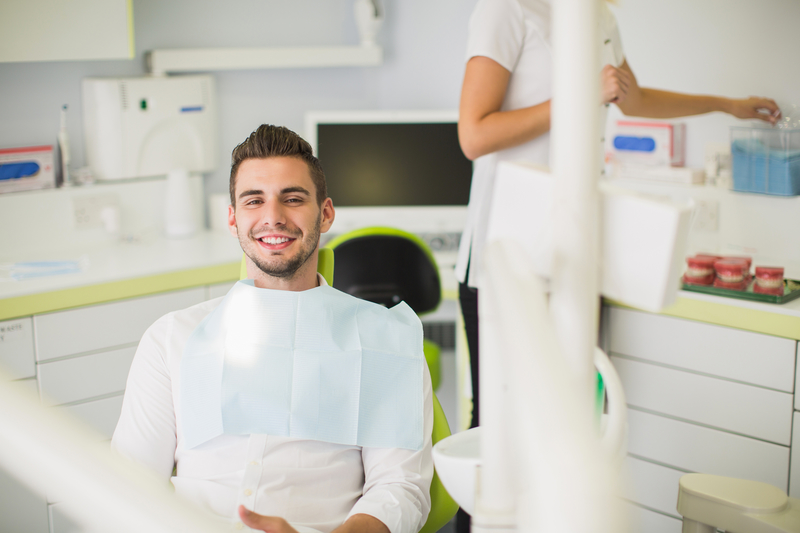
Studies show that not enough Americans are taking good care of their teeth, especially through dental and orthodontic treatment. The advanced technology available today is what allows patients to keep their natural teeth healthy for life and is something that millions in the world don’t have access to. Find out why oral health services such as orthodontic treatment is so important to patients and something to be thankful for this time of year!
Your Oral Health
When you think of the most chronic conditions and diseases that plague people today, you may not think of cavities as being one of the them. The National Institutes of Health reports that tooth decay—or cavities—are the most “chronic, prevalent disease” among American children and adults. In fact, about 92% of people have tooth decay by the time they reach adulthood. In all age groups, roughly between 20% and 25% of people have untreated decay they are not aware of.
What does tooth decay have to do with orthodontic treatment? This decay can happen to anyone at anytime and you are more likely to have tooth decay during your orthodontic treatment. Many patients opt for lingual, ceramic or traditional metal braces to straighten their teeth. These methods require brackets that are bonded to the teeth with wires that pass through those brackets. Even though these appliances are highly effective for providing beautiful straightening power, they can make it harder to clean your teeth. Because it’s harder to clean them, and some patients don’t take the extra time to do this, you can end up with tooth decay. That adds to that 92% statistic.
The best way to eliminate your risk for that tooth decay (as well as other oral health diseases), is to properly care for your teeth both with and without braces. That involves brushing your teeth at least twice a day for 2 minutes at a time, as recommended by the American Dental Association. When you have braces, you have to do this after every meal to avoid acidic plaque buildup, which happens when your food and drink sugars mix with mouth bacteria. With braces, threadable floss to go around brackets and wires is generally needed, as well as cleaning items such as a waterpik (water shooter) tool and a proxabrush for brackets. Your oral health can be stellar during orthodontic treatment with the right oral hygiene.

How Does the U.S. Compare?
Orthodontic treatment is a time when those in the U.S. can have a greater risk for developing cavities. This comes from a lack of oral hygiene during your orthodontic treatment period. However, the world at large is battling oral health diseases and poor dental and orthodontic care on an epidemic scale. The World Health Organization reports that cavities (tooth decay) and gum disease (periodontal disease) “have historically been considered the most important global oral health burdens”.
60%-90% of people worldwide have tooth decay and oral diseases connected to this condition. Children are affected the most, but statistics are almost as high in adults worldwide. Even though the U.S. is at a high percentage when it comes to tooth decay (92%), the presence of tooth decay is generally eliminated in most of the population through proper dental work and access to dental services. In the majority of other countries—especially underdeveloped ones—dental or orthodontic work is not a possibility for most. Oral health diseases are simply left untreated or the teeth are pulled when they become too painful.
The Connection to Orthodontic Treatment
Getting a cavity or having an oral health problem during your life can definitely be avoided, but most people will have some sort of oral problem, even if it is small. There are ways to prevent those problems such as proper brushing and flossing every single day. A great way to reduce your risk for oral health diseases is through orthodontic treatment. For children, this is known as child orthodontics. The American Association of Orthodontics recommends that children have their first orthodontic appointment between age 7 or 8.
This is a time when baby teeth are starting to fall out and adult, permanent teeth are starting to come into the mouth. Proper examination by an orthodontist can sport bite and alignment issues that are developing in children. When these issues occur, the teeth can come in crooked all over or they may not rest in the position they are supposed to. This can lead to speech impediments, many dental emergencies and broken teeth in the future from uneven dental pressure, higher instances of tooth decay and gum disease, and problems with oral health diseases.
Orthodontic treatment when young can help align the teeth and jaws to prevent oral problems as a child grows. When teens and adults receive orthodontic treatment via braces, they can better straighten permanent teeth when they come in. This sets everything straight and functional before the jaws harden in adulthood. Straight teeth and aligned jaws make it so cleaning the teeth becomes almost effortless. The risk for tooth decay and gum disease is also significantly lower.

Be Thankful for Your Orthodontic Treatment
Dentistry and orthodontic treatment helps diminish the presence of oral diseases.Yes, tooth decay and gum disease happen frequently due to poor oral hygiene habits. However, orthodontic treatment can help prevent those problems in the first place. Great oral care can prevent developing problems throughout your life. Even when these issues do happen, you won’t have to simply get your teeth pulled or let them decay and fall out of your mouth.
You have great orthodontic and dental options in the United States that allow you to keep your teeth, while many people across the globe have to lose them. Remember that the next time you think about skipping your oral care appointments. To reduce your risk for oral health diseases, you can call Belmar Orthodontics at (303) 225-9016 and ask about your orthodontic treatment plan.
Foods and Drinks that Harm Your Teeth
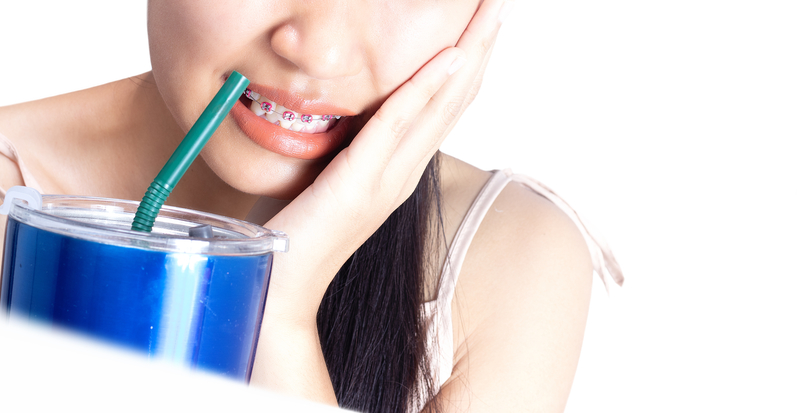
Did you know that what you’re drinking might be hurting your oral health? Many patients experience problems like tooth erosion and thinning without realizing that the problem is what they’re eating. Use this guide to know the effects of foods and drinks on the teeth and what to watch out for!
Wear and Tear on Your Teeth
Your teeth are made of tightly-packed minerals that keep them strong and healthy. Those include calcium, phosphate, magnesium and more. Your saliva helps break down your food and helps to remineralize your teeth each day. Eating certain foods and drinks can strip minerals from your teeth slowly over time, making them weak, sensitive and thinner. These are common oral health problems with age. However, thinning (or enamel erosion) and sensitivity usually come from a lack of oral hygiene. If you enjoy a daily soda or you love your sweet treats throughout the day, you may be weakening your teeth at a rapid pace.

Foods that Cause Damage
Some foods build up your tooth enamel and help it, like dairy products helping to remineralize calcium. Others—like sugar—tear it down. Avoid these foods to keep your smile healthy:
- Anything Citrus: This includes both foods and drinks. Citrus fruits (lemon, lime, orange, etc.) and drinks contain citric acid. This is there naturally or as an additive to maintain flavor. Any type of acid on a label will erode your teeth if you ingest it.
- Sugar: Sugar mixes directly with mouth bacteria to form a sticky film called plaque. That plaque sticks to teeth and causes decay. Because it’s acidic, it will work on your teeth to erode and decay them. The more sugar you eat, the more plaque your mouth makes, and the more erosion and decay you get. This is especially true while wearing braces.
- Hard Candies/Mints: Any candy or mint you suck on (like a sucker) exposes your teeth to sugar constantly, which leads to decay from plaque acid.
- Chewy/Sticky Candy: Any chewy/sticky consistency is destined to get stuck in brackets and wires. It also sticks like glue to the teeth if they’re not brushed properly.
- Starchy Foods: Breads, cookies, crackers, pasta and anything starchy will get stuck in your teeth. All of these quickly break down into sugar, which can affect your teeth and your overall health.
- Popcorn: Popcorn and hard foods like nuts, hard veggies and fruits and non-food items can be bad for your teeth with braces, as they can break your orthodontic appliance. Limit them to avoid orthodontic emergencies.
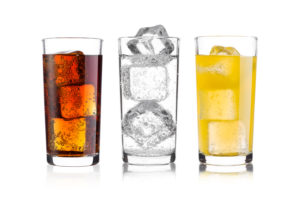
Drinks to Avoid
Drinks can be even more damaging than food in many cases. That’s because you can drink all day long, and if your drink is acidic, those acids stay on your teeth up to 30 minutes. Soft drinks (soda/sports drinks) are notorious for high sugar content. That sugar can create tons of plaque in your mouth that causes decay. As we mentioned, that combination is acidic. Every time you drink, your are making plaque that can weaken your teeth.
Avoid these drinks that are acidic, sugary or can stain:
- Soda: This contains carbonic acid, which comes from a chemical reaction between carbon dioxide and water. It stays acidic on your teeth for up to 30 minutes. Most sodas are incredibly high in sugar, which means they are doubly bad for you.
- Energy drinks, etc.: Energy drinks, sparkling water, and any drink of the sort that contains carbonic acid. Avoid drinks with fizzy bubbles or limit their contact with the teeth by drinking through a straw.
- Sports Drinks: These drinks are often full of sugar, plus citric acid to maintain flavor. Avoid them and stick to water.
- Water Enhancers: Water-flavoring liquids or powders generally contain citric acid to maintain flavor. Even if the substance is clear, the acid will still erode teeth even if the drink isn’t staining them.
- Alcohol: Many contain carbonation (carbonic acid) and all will kill nerves in your mouth, leading to loss of feeling over time.
- Coffee: This drink, tea, wine and anything with blue, purple or red pigments will stain the teeth. If you teeth are eroding over time, the dyes get into small cracks in the teeth, changing tooth color rapidly.
Damaging Habits that Harm Your Teeth
If you want to have your teeth for life, you have to take care of them. You have to try even harder to care for them when you have braces. More than 4 million Americans are wearing braces each year. Some opt for Invisalign aligners, which are removable and which make cleaning the teeth fairly easy. However, many patients—especially children and teens—wear lingual, traditional metal or ceramic braces. All of these types of braces have brackets bonded to the tooth surface and wires that hold them in place.
If you don’t brush and floss like normal, your teeth can decay, erode and you can have problems with both gingivitis or severe gum disease. Your teeth can weaken and break easy and they can fall out. That’s why you want to have meticulous oral hygiene all throughout life. Proper brushing, flossing, visiting the dentist or orthodontist, and using oral health products like mouthwash and fluoride can all help you keep your natural teeth healthy.
With braces, you can have your teeth become thin and weak based on what you eat, or they can decay and change colors based on how you care for them. You can definitely harm your teeth if you’re not cleaning your brackets, wires and teeth several times a day. Good oral hygiene care is vital to having a healthy and beautiful smile at the end of your treatment. An easy step to avoid problems is to avoid the foods and drinks we listed above. Be even more careful about those foods and drinks with braces. For specific questions about certain foods or drinks, or help for proper braces care, call Belmar Orthodontics today at (303) 225-9016!
Avoid These Sweet Treats at Halloween with Braces
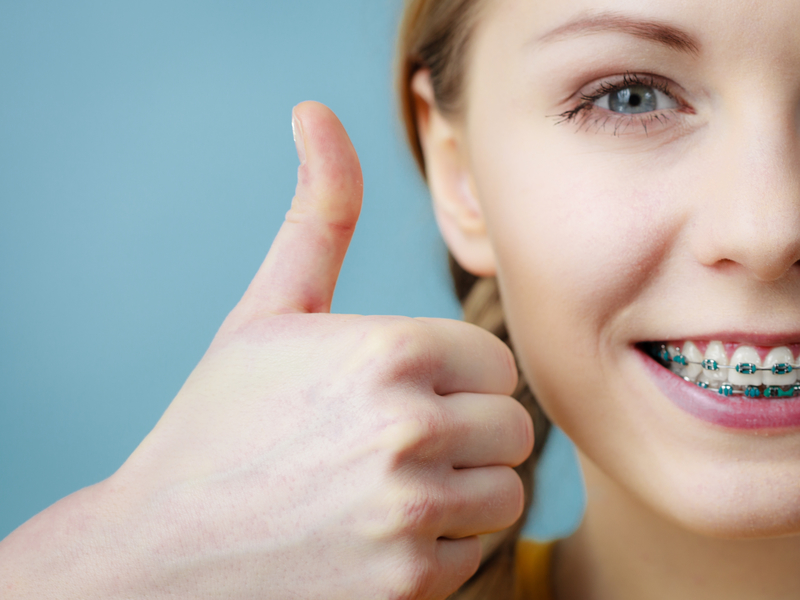
Halloween can be an incredibly fun time for kids and adults alike. However, the not-so-fun part is developing cavities later on because of that Halloween candy. Sugar is directly related to tooth decay, but it’s even worse if you have braces on your teeth. There are specific candies you should try to avoid if you have brackets and wires, as they can get stuck easier. Find out what these are and tips to reduce your risk for tooth decay during the holidays!
How Popular Is Halloween?
About $2.4 billion dollars is spent in Easter candy each year. However, Halloween candy is a close second at around $2.1 billion in sales. Divided up into individual households, that’s about $44-$47 dollars spent on Halloween candy in each household.
If you think Halloween candy sales are scary, here are the facts on the actual candy consumed on Halloween day itself:
- Almost all children and at least ½ of all adults eat candy on Halloween day.
- However, the amount of candy consumed is well-past the recommended 6 or less teaspoons children should have in a day. Adults should only have between 6 and 9 teaspoons of sugar (tops) per day. On Halloween itself, up to 3 cups of candy is consumed per child.
- That equates to about 48 teaspoons of sugar per cup, or about 144 teaspoons of sugar, or 675 grams of sugar in one day.
- USA Today reports that 4% of all the candy eaten in the U.S. is eaten on Halloween day.
- Reader’s Digest reports that the amount of calories children and adults alike eat on Halloween equals anywhere between 3,000 and 7,000 calories.
- Not only can this much sugar lead to incredible health problems and diabetes, but sugar—the main ingredient in that candy—is the direct cause of tooth decay.

How Can Candy Hurt Your Teeth?
Candy is damaging to your teeth because of the sugar, which is a direct factor in your risk for tooth decay. The more sugar you eat, the more cavities you could get. When you eat or drink, sugars in food will mix with certain bacterias in your mouth. That mixture will create a sticky substance called plaque. You can’t simply swallow that plaque either. It sticks to your teeth and becomes an acidic substance when it mixes.
Because it’s acidic, as it sticks to your tooth enamel like a film, it will work to erode and decay your teeth. It does this by breaking up the minerals that make up your tooth enamel layer. If you don’t brush and floss your teeth often enough, or you eat a ton of sugar, you have plaque working hard on your teeth to destroy them.
Plaque can decay your tooth surface to create surface cavities. If enough decay happens on that layer, it can get through to the inner layers of the teeth, causing internal (and sometimes large) cavities that can turn into infections and tooth loss. Sugar is the main food for plaque, which is why candy—whose main ingredient is sugar—can hurt your teeth.
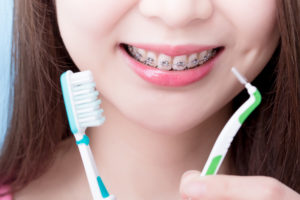
Avoiding Specific Sweet Treats with Braces
Anyone can get cavities and other oral health problems from a large candy or sugar consumption. You don’t only have to worry about candy either when it comes to cavities—you have to worry about all foods. Most foods you can buy at the store have added sugars in them. That includes juices, sports drinks, and sodas, as well as the obvious sugar foods like candy, cakes, ice cream and cookies. Always check food labels to see how much sugar a food contains.
There are specific foods you want to avoid if you wear braces, as those foods and candies can make it much easier for you to get cavities. Especially at Halloween, popular candies are ones that are chewy and sticky. Anything chewy and sticky will get stuck in your brackets and wires if you wear lingual, ceramic or metal braces. Sweet treats you want to avoid if you wear braces include:
- Gum: Gum is made to be elastic and sticky and can stick to brackets like crazy. Avoid it completely with braces. After your braces are off, chew sugar-free gum.
- Chewy/Sticky Candy: Examples include caramels, taffy, Tootsie Rolls, Starburst, licorice, Skittles, Sugar Daddies and any candies that are similar. Avoid fruit snacks, gummies and dried fruit as well, which are all incredibly sticky.
- Hard Candies: These go hand-in-hand with suckers and mints. All of these candies expose your teeth to sugars for prolonged periods of time, which means a prolonged risk for acidic plaque and tooth decay.
- Sodas/Citrus Drinks: These and any carbonated drinks all contain either citric acid or carbonic acid, which erode the teeth. That can mean you have tooth erosion and decay all around your brackets, which will be very noticeable when your braces come off.
Enjoy Some Sweetness This Halloween
When it comes to Halloween, we want all of our patients to have fun and to enjoy the holiday. Candy is naturally a part of that holiday, but it doesn’t mean that you have to experience tooth decay in the weeks following it. Every person needs to be conscious of their candy consumption on Halloween to avoid tooth decay, erosion and health problems in general.
You don’t want to work hard for 18-24 months getting a straight smile if it’s decayed when your braces finally come off. Enjoy your Halloween sweet treats, but be mindful of your oral health. Brush your teeth 3 times a day or after every meal with fluoride toothpaste. Floss your teeth at least 1-2 times a day. Avoid sticky and sugary treats and clean the teeth very well if you do eat them at Halloween. Avoid acidic drinks and watch your sugar consumption. For tips on cleaning your teeth correctly with braces to avoid tooth decay, call Belmar Orthodontics today at (303) 225-9016!
Teaching Children Good Oral Hygiene Habits
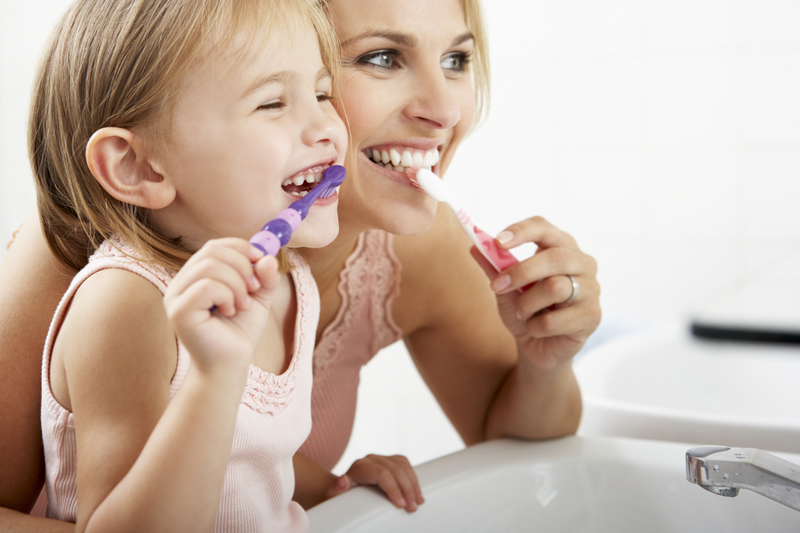
If you teach a child good oral hygiene habits early on, odds are that they will have better oral hygiene habits when they are teens and adults. As soon as a toddler gets their first tooth, it’s essential to start brushing and flossing their teeth. Afterwards, you will need to teach them the basics of good oral hygiene practices, especially when it comes to wearing braces. Find out what those basics are and what you should be thinking about for your child’s oral health!
Teaching Good Oral Hygiene Early
Good oral hygiene habits are essential for a healthy mouth and especially during orthodontic care. Many children need early orthodontics, which is also known as “child orthodontics”. This is when bite and alignment issues are corrected around age 7 or 8 to avoid serious problems later on. However, we hope that every child has good oral hygiene habits established well before this visit. Otherwise, not only will a child be dealing with bite and alignment issues, but they will also be dealing with tooth decay.
As soon as your child gets their first tooth as a baby, you need to start brushing that tooth. Brush it morning and night with a rice-size amount of fluoride toothpaste. Also make sure to clean your baby’s gums with a wet cloth after feedings. Once they start to grow, begin teaching them how to brush their teeth properly. You will have to help brush your child’s teeth for the first couple of years until they have the dexterity in their hands to do it themselves. Flossing will come later as more teeth come in.
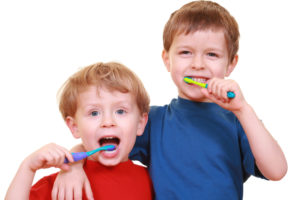
Learning to Brush
Brushing the teeth is one of the most important habits a child can have. Brushing long enough is key for a healthy mouth. Make sure you get a toothbrush that fits the size of your child’s mouth. There are brushes for infants, toddlers, children, teens and adults. All will be different sizes and some children brushes will come in fun shapes and colors to help children brush.
Children can’t always tell how long they have been brushing. Having them brush their teeth for a duration of a song or brushing your teeth alongside them to make sure they brush long enough. When they are old enough to have braces, brushing is even more important than before to avoid tooth decay. Food that gets stuck in brackets can cause rapid decay. Make sure they brush longer and at different angles to dislodge food. When children are first learning, brush with them as many days as it takes when first learning to brush their teeth. Do the same when they learn to brush with braces.
Flossing 101
Children won’t have to floss until they are toddlers. The baby teeth are spaced out until they all come in. Kids will have a total of 20 baby teeth that will start to come closer together as a baby ages. Until a child has the dexterity to use floss like an adult, it’s smart to invest in flossers. These are secure, hand-held flossing tools that children can put in between their teeth to easily dislodge food. Ask us about mouthwash and fluoride products to see if they should be part of your child’s oral hygiene routine as well.
See a Dentist and Orthodontist
Starting from an early age, children need to start visiting the dentist. By age 7, they should see us for an orthodontic exam as well. Dental visits themselves are so important that most dental insurances cover those twice-a-year visits. These biannual visits generally consist of comprehensive exams and dental cleanings. At first, children may be nervous about visiting a dentist. Offices can be large with busy equipment that children aren’t familiar with. Dental tools can also be loud, which can make children nervous. However, these visits are nothing to worry about whether it is a dentist or orthodontist.
To help your child get used to being in an office, make sure you go to a pediatric dentist instead of a general dentist while they are young. Pediatric offices (such as our orthodontic one) has staff that is trained to work well with children. Dr. Hardyl has experience with children on a daily basis. He was trained in both dentistry and orthodontics and can spot the signs of dental issues early-on. His staff knows what kids worry about and they know how to explain dental and orthodontic terms so a child can understand. An exam sounds serious, but it’s really just Dr. Hardy looking inside your child’s mouth for any bite, alignment or dental problems. If a child hasn’t seen Dr. Hardy by age 7, make sure to get them in for an examination!
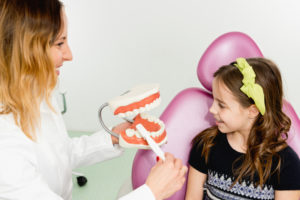
Good Habits for Life
Start children out young when teaching them good oral hygiene. If you make a habit of brushing and flossing, children will see that example and will follow it. When you help them learn good oral hygiene habits as soon as they can talk and understand, they can start keeping their mouth clean themselves. There are many resources online to help teach children specifics of brushing, flossing, and for learning about dental hygiene. We help children every day with brushing, flossing, caring for braces and establishing good oral hygiene. Call Belmar Orthodontics at (303) 225-9016 with any and all questions you have about your child’s oral health. Let us help you as you and your child learn to establish good oral hygiene habits together!
Why Having Good Oral Hygiene Is Important
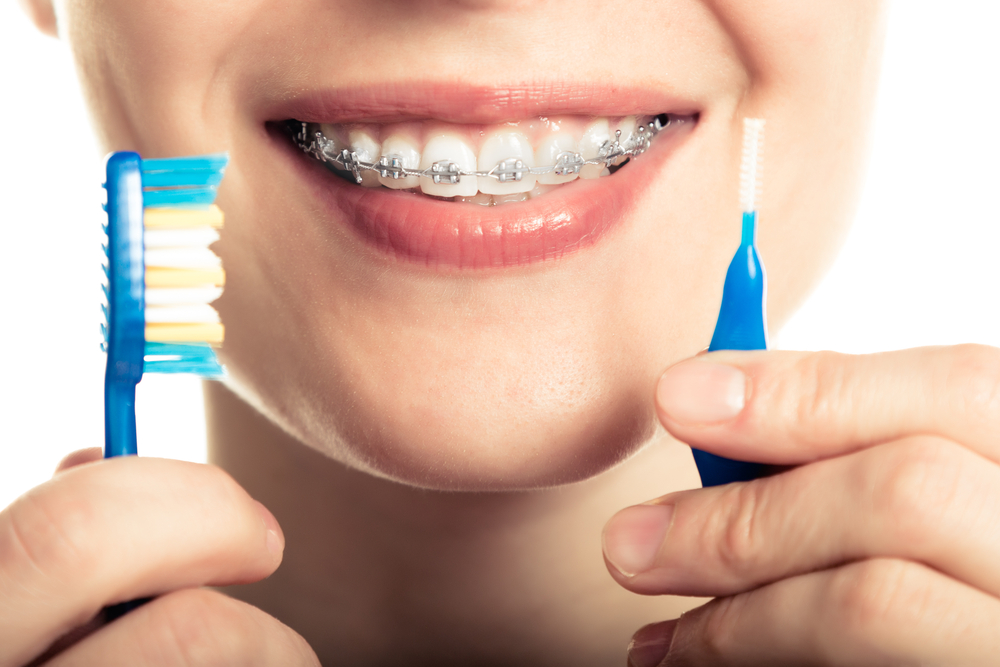
Millions of Americans don’t practice good oral hygiene, which is the #1 reason teeth decay and fall out. Good oral hygiene coupled with good nutrition can help prevent gum disease, tooth decay and even bad breath. It will also help us to be able to straighten your teeth without damage and provide you with a more brilliant, beautiful smile. There are many tips for keeping your teeth healthy and strong. Many of these tips have to do with nutrition and overall good oral hygiene. Good nutrition can aid in better health for you and for your teeth. We want all of our patients to be able to achieve a healthy mouth, but the first steps begin before you even come to our office. At Belmar Orthodontics, learn more about good oral hygiene and how orthodontic care can help you!
Practice Good Oral Hygiene
Sometimes, the basics are the hardest to do because they seem so simple. You skip brushing one night, then you do it again, and soon it starts to become a habit. When it comes to braces, we see patients skip on the basics here and there all the time. Why? This is most likely because braces take a little bit longer to care for than teeth without braces. Skipping on proper brushing and flossing can seriously damage and erode the tooth enamel.
The Prevalence of Decay
We recommend brushing and flossing at least twice a day, if not more. After every meal would be ideal, but not everyone makes a habit of doing that. What happens when you don’t brush and floss the teeth properly? You develop dental caries. The American Dental Association reports that 91% of adults 20 years old and older have had dental caries. 27% had untreated tooth decay. What does this mean? It means that 91% of people have had cavities and 27% had untreated cavities that will continue decaying. The National Institute of Dental and Craniofacial Research reports that dental caries is the most prevalent chronic disease in the United States in both children and adults. The sad part? It’s completely preventable.
Tooth decay occurs when proper oral hygiene practices are not followed. When we eat and drink, bacteria in the mouth mixes with sugar to make acidic plaque. That plaque coats your teeth and over time, erodes the hard tooth enamel. Inside the tooth is a soft, pulpy center that contains nerves and sensitive parts of the tooth. When hygiene practices are skipped, that plaque will erode the teeth enough to break down the enamel and seep into the soft, pulpy center. It will then have a heyday and cause as much decay as it possibly can. Mild tooth decay will result in fillings for cavities. Severe tooth decay will result in a root canal or a dental extraction. The great part about all of this? Tooth decay is completely preventable! All you have to do is take care of your oral health!
Be Extra Careful with Braces
Braces make cleaning the teeth slightly more tricky, but definitely not impossible! With braces, you generally have brackets that are glued to each tooth. A wire connects those brackets on the upper and lower jaws. Brackets and wires in your mouth make it easier for food particles to get stuck. This leads to other dental issues if proper care is not taken. Here are some tips to help prevent tooth decay:
- Brush after every meal. Brushing will help prevent staining and will reduce the potential for bacteria buildup. Food can easily become trapped in the brackets and can erode the tooth enamel around the brackets. Make sure to use a soft brush to brush down from the top, then up from the bottom on each bracket and tooth.
- Use a floss threader. You can’t skip flossing when it comes to braces as it’s even more important now than ever. Tooth decay often happens between the teeth with braces. Using a floss threader will allow you to insert the floss through the teeth and above or below the wire. This allows you to clean effectively in between each tooth. Do this several times a day!
- Avoid certain foods. Hard foods are a no-no with braces and can break brackets or become stuck in the teeth. Avoid hard candy, chips, ice, apples, crusty bread, nuts, popcorn, corn on the cob, carrots and any other hard candies. Avoid chewy candies or foods such as caramel, toffee, taffy, starbursts, licorice, tootsie rolls, gummy bears and more. For a more comprehensive list of food items, you can always call our office.
Over 64 million Americans suffer from gum disease, tooth loss and tooth decay. Poor dental hygiene and tooth decay make orthodontic care that much harder to perform. The point is to get your smile straight and beautiful without making it weaker. Our orthodontic techniques are effective and strong when it comes to getting your teeth in proper position. We want all our patients to have beautiful, straight and strong smiles. It’s vital that you follow proper oral hygiene practices every single day and that you double your efforts while wearing braces. If you need help with your oral hygiene routine or braces maintenance, call our Belmar Orthodontics office today at (303) 225-9016.

